MaryAnn Bernal's Blog, page 273
June 3, 2014
Mr. Chuckles bumps into Georgia Rose around The Wizard's Cauldron
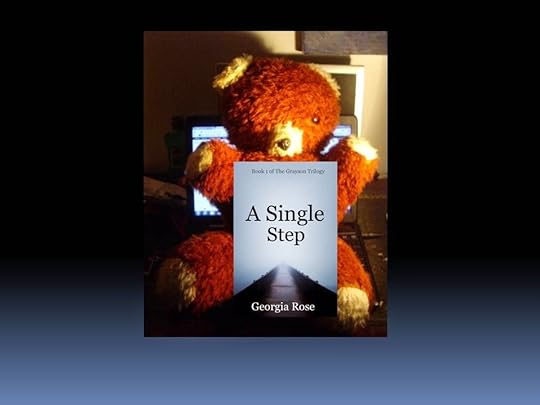 Georgia Rose is the pen name of someone I met recently, a UK author living in the beautiful southern countryside. As you shall see, she likes a natter and already, with her first novel, she has attracted plenty of buzz and interest on the circuit.
Georgia Rose is the pen name of someone I met recently, a UK author living in the beautiful southern countryside. As you shall see, she likes a natter and already, with her first novel, she has attracted plenty of buzz and interest on the circuit. I picked up the Wizphone and caught her making MidSummer's Day bonnets for the upcoming village fete, allegedly. Here's what she had to say - a thoroughly entertaining interview.
Who Is Georgia Rose?
Click on the link to read more
http://greenwizard62.blogspot.co.uk/2014/06/romantic-suspense-with-georgia-rose.html

Published on June 03, 2014 16:43
Huge Tooth Proves Jurassic Seas Were Crazy Dangerous
by Jennifer Viegas
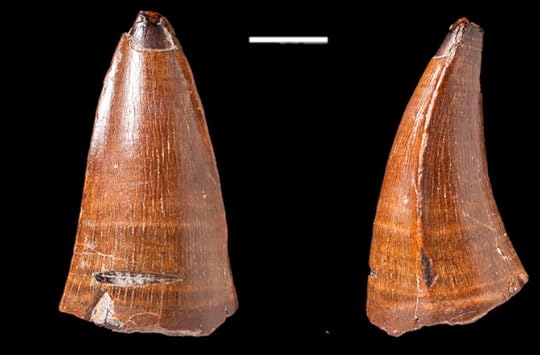 Photograph of the Dakosaurus maximus tooth (front and side) recovered from the English Channel near Dorset, England.
Photograph of the Dakosaurus maximus tooth (front and side) recovered from the English Channel near Dorset, England.
A fossilized tooth dredged from the bottom of the English Channel near Dorset, England, belonged to a formidable Jurassic marine predator and is the largest known tooth of its kind found in the U.K., according to a new study.
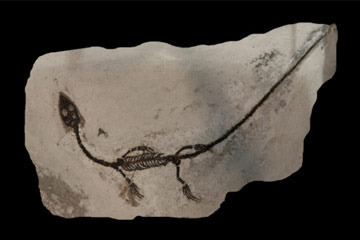
Analyzing Dinosaur Fossils Kasey-Dee Gardner gets a behind-the-scenes look at how information is extracted from ancient fossils. Hemera/Thinkstock The 2.36-inch-long tooth has a broken tip, and would have been even bigger when new, suggests the paper, published in the journal Historical Biology.
The study determined that the tooth is 152 million years old and belonged to a prehistoric relative of modern crocodiles known as Dakosaurus maximus.
NEWS: Giant Dinosaurs Unearthed in Argentina
"That (Dakosaurus) had 2.36 inch (6 centimeter) or longer teeth for an animal only 4.5 meters (about 15 feet) long is remarkable," lead author Mark Young told Discovery News.
"The teeth were serrated, robust and contacted one another, making slicing much easier," added Young, a paleontologist at the University of Edinburgh’s School of Biological Sciences. "This animal would have had a fearsome bite for its size."
During the marine predator’s lifetime, a shallow sea covered what is now Europe, turning the landmasses into an archipelago. Archaeopteryx, believed to have been the world’s first bird, lived in Europe during this time, as did some dwarf non-avian dinosaurs, such as Europasaurus. But the real predator action was found in the water.
Photos: Dinosaur Claws Evolved from Basic to Badass
Young said that Dakosaurus maximus, which belonged to a family of croc predecessors known as metriorhynchids, was puny in comparison to the gigantic marine reptile Pliosaurus. The skull alone of Pliosaurus measured about 6.6 feet long, and some estimates hold that the entire body of this monster predator measured 49 feet long.
Yet another marine predator at the time was Plesiosuchus manselii, which was larger than today’s great white sharks. Dakosaurus maximus, however, was particularly abundant, living in shallow lagoons, coastal environments and deep-sea regions. In the lagoonal environments, which lacked the other large animals, it seems to have been the top predator.
"The shallow seas of the late Jurassic would have been an exceptionally dangerous place to swim," Young said.http://news.discovery.com/animals/dinosaurs/huge-tooth-proves-jurassic-seas-were-crazy-dangerous-140527.htm
 Photograph of the Dakosaurus maximus tooth (front and side) recovered from the English Channel near Dorset, England.
Photograph of the Dakosaurus maximus tooth (front and side) recovered from the English Channel near Dorset, England.A fossilized tooth dredged from the bottom of the English Channel near Dorset, England, belonged to a formidable Jurassic marine predator and is the largest known tooth of its kind found in the U.K., according to a new study.

Analyzing Dinosaur Fossils Kasey-Dee Gardner gets a behind-the-scenes look at how information is extracted from ancient fossils. Hemera/Thinkstock The 2.36-inch-long tooth has a broken tip, and would have been even bigger when new, suggests the paper, published in the journal Historical Biology.
The study determined that the tooth is 152 million years old and belonged to a prehistoric relative of modern crocodiles known as Dakosaurus maximus.
NEWS: Giant Dinosaurs Unearthed in Argentina
"That (Dakosaurus) had 2.36 inch (6 centimeter) or longer teeth for an animal only 4.5 meters (about 15 feet) long is remarkable," lead author Mark Young told Discovery News.
"The teeth were serrated, robust and contacted one another, making slicing much easier," added Young, a paleontologist at the University of Edinburgh’s School of Biological Sciences. "This animal would have had a fearsome bite for its size."
During the marine predator’s lifetime, a shallow sea covered what is now Europe, turning the landmasses into an archipelago. Archaeopteryx, believed to have been the world’s first bird, lived in Europe during this time, as did some dwarf non-avian dinosaurs, such as Europasaurus. But the real predator action was found in the water.
Photos: Dinosaur Claws Evolved from Basic to Badass
Young said that Dakosaurus maximus, which belonged to a family of croc predecessors known as metriorhynchids, was puny in comparison to the gigantic marine reptile Pliosaurus. The skull alone of Pliosaurus measured about 6.6 feet long, and some estimates hold that the entire body of this monster predator measured 49 feet long.
Yet another marine predator at the time was Plesiosuchus manselii, which was larger than today’s great white sharks. Dakosaurus maximus, however, was particularly abundant, living in shallow lagoons, coastal environments and deep-sea regions. In the lagoonal environments, which lacked the other large animals, it seems to have been the top predator.
"The shallow seas of the late Jurassic would have been an exceptionally dangerous place to swim," Young said.http://news.discovery.com/animals/dinosaurs/huge-tooth-proves-jurassic-seas-were-crazy-dangerous-140527.htm

Published on June 03, 2014 10:41
900-Lb. Ancient Croc Tore Through Turtles, Battled Monster Snakes
By Megan Gannon
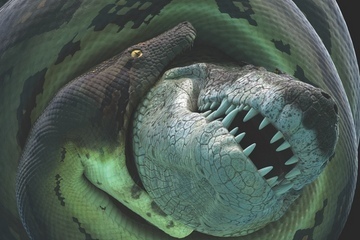 An animation from a Smithsonian Channel documentary shows a dyrosaur being constricted by the "monster snake" Titanoboa.
An animation from a Smithsonian Channel documentary shows a dyrosaur being constricted by the "monster snake" Titanoboa.
Credit: Smithsonian ChannelIt was 16 feet (4.8 meters) long and tipped the scales at 900 lbs. (408 kilograms). With a blunt snout and powerful bite, it ate turtles and battled monster snakes. Now this extinct dyrosaur, a type of crocodilian, which roamed an ancient rainforest a few million years after the dinosaurs died, has a scientific name.
It's called Anthracosuchus balrogus after the fiery Balrog that lurked deep in the Middle-Earth mines of Moria in J.R.R. Tolkien's novel "The Lord of the Rings."
"Much like that giant beast, Anthracosuchus balrogus was [awakened] from deep within a mine after 60 million years trapped within the rocks of tropical South America," study researcher Jonathan Bloch, associate curator of vertebrate paleontology at the Florida Museum of Natural History, told Live Science in an email
Four specimens of the new species were unearthed in a layer of rock in the fossil-rich Cerrejón coal mine of northern Colombia, where scientists previously have found huge turtles with shells as thick as high-school textbooks and skeletons of the world's largest snake, Titanoboa , a 48-foot-long (14.6 m) beast that recently starred in a Smithsonian Channel documentary.
A. balrogus is the third new species of ancient crocodilian found at Cerrejón, scientists say. (Another, Acherontisuchus guajiraensis , was described in the journal Palaeontology in 2011.) The newly named croc belonged to an intrepid family known as the dyrosaurids.
These creatures arose in Africa, paddled across the Atlantic Ocean to South America about 75 million years ago and remarkably survived the mass extinction that wiped out the dinosaurs about 65 million years ago, scientists say. Some dyrosaurid species, such as A. balrogus, adapted to freshwater ecosystems like the rainforest of Cerrejón, which was much warmer and swampier 60 million years ago than it is today.
"This group offers clues as to how animals survive extinctions and other catastrophes," Alex Hastings, a postdoctoral researcher at Martin Luther Universität Halle-Wittenberg and former graduate student at the Florida Museum of Natural History, said in a statement. "As we face climates that are warmer today, it is important to understand how animals responded in the past. This family of crocodyliforms in Cerrejón adapted and did very well despite incredible obstacles, which could speak to the ability of living crocodiles to adapt and overcome."
Hastings and colleagues described the new species last month in the journal Historical Biology. Compared with its cousins, A. balrogus has an unusually short, blunt snout. Paired with the large jaw muscles that are characteristic of dyrosaurids, this feature would give A. balrogus an incredibly powerful bite, Hastings explained.
"It quickly became clear that the four fossil specimens were unlike any dyrosaur species ever found," Hastings said. "Everyone thinks that crocodiles are living fossils that have remained virtually unchanged for the last 250 million years. But what we're finding in the fossil record tells a very different story."
http://www.livescience.com/46046-ancient-croc-lord-of-the-rings-balrog.html

 An animation from a Smithsonian Channel documentary shows a dyrosaur being constricted by the "monster snake" Titanoboa.
An animation from a Smithsonian Channel documentary shows a dyrosaur being constricted by the "monster snake" Titanoboa.Credit: Smithsonian ChannelIt was 16 feet (4.8 meters) long and tipped the scales at 900 lbs. (408 kilograms). With a blunt snout and powerful bite, it ate turtles and battled monster snakes. Now this extinct dyrosaur, a type of crocodilian, which roamed an ancient rainforest a few million years after the dinosaurs died, has a scientific name.
It's called Anthracosuchus balrogus after the fiery Balrog that lurked deep in the Middle-Earth mines of Moria in J.R.R. Tolkien's novel "The Lord of the Rings."
"Much like that giant beast, Anthracosuchus balrogus was [awakened] from deep within a mine after 60 million years trapped within the rocks of tropical South America," study researcher Jonathan Bloch, associate curator of vertebrate paleontology at the Florida Museum of Natural History, told Live Science in an email
Four specimens of the new species were unearthed in a layer of rock in the fossil-rich Cerrejón coal mine of northern Colombia, where scientists previously have found huge turtles with shells as thick as high-school textbooks and skeletons of the world's largest snake, Titanoboa , a 48-foot-long (14.6 m) beast that recently starred in a Smithsonian Channel documentary.
A. balrogus is the third new species of ancient crocodilian found at Cerrejón, scientists say. (Another, Acherontisuchus guajiraensis , was described in the journal Palaeontology in 2011.) The newly named croc belonged to an intrepid family known as the dyrosaurids.
These creatures arose in Africa, paddled across the Atlantic Ocean to South America about 75 million years ago and remarkably survived the mass extinction that wiped out the dinosaurs about 65 million years ago, scientists say. Some dyrosaurid species, such as A. balrogus, adapted to freshwater ecosystems like the rainforest of Cerrejón, which was much warmer and swampier 60 million years ago than it is today.
"This group offers clues as to how animals survive extinctions and other catastrophes," Alex Hastings, a postdoctoral researcher at Martin Luther Universität Halle-Wittenberg and former graduate student at the Florida Museum of Natural History, said in a statement. "As we face climates that are warmer today, it is important to understand how animals responded in the past. This family of crocodyliforms in Cerrejón adapted and did very well despite incredible obstacles, which could speak to the ability of living crocodiles to adapt and overcome."
Hastings and colleagues described the new species last month in the journal Historical Biology. Compared with its cousins, A. balrogus has an unusually short, blunt snout. Paired with the large jaw muscles that are characteristic of dyrosaurids, this feature would give A. balrogus an incredibly powerful bite, Hastings explained.
"It quickly became clear that the four fossil specimens were unlike any dyrosaur species ever found," Hastings said. "Everyone thinks that crocodiles are living fossils that have remained virtually unchanged for the last 250 million years. But what we're finding in the fossil record tells a very different story."
http://www.livescience.com/46046-ancient-croc-lord-of-the-rings-balrog.html

Published on June 03, 2014 10:28
Protect Our Vets: VA Hospital's Lies Turn Deadly for Waiting Veterans
Protect Our Vets: VA Hospital's Lies Turn Deadly for Waiting VeteransRecent allegations of VA misconduct reveal the systemic dysfunction plaguing the organization responsible for veteran care.  Goal: 25,000 • Progress: 1,182
Goal: 25,000 • Progress: 1,182  Sponsored by: The Veterans Site As the number of veterans continues to grow, waiting times at VA facilities have been on the rise for well over a decade, pressuring leadership to reduce wait times and improve care. This dilemma took a tragic turn when a shocked nation learned that a VA hospital in Phoenix maintained two lists of waiting veterans. On the first, the official list reported to the administration, veterans received expedient care with average waits of only 24 days. On the other, 1,700 sick veterans languished for months or longer — if they received any care at all.
Sponsored by: The Veterans Site As the number of veterans continues to grow, waiting times at VA facilities have been on the rise for well over a decade, pressuring leadership to reduce wait times and improve care. This dilemma took a tragic turn when a shocked nation learned that a VA hospital in Phoenix maintained two lists of waiting veterans. On the first, the official list reported to the administration, veterans received expedient care with average waits of only 24 days. On the other, 1,700 sick veterans languished for months or longer — if they received any care at all.
And as many as 40 of these veterans died while waiting.
When the news of these “secret lists” first trickled out of the Phoenix facility, officials insisted it was an “isolated incident” and represented the malfeasance of a few bad apples. Since those early reports, the evidence and allegations continue to pile up, expanding the ongoing investigation to 42 medical centers across the country. These revelations ultimately forced VA Secretary Eric Shinseki from his post, the most notable in a rash of firings in the hunt for accountability.
But such firings are symbolic gestures and fail to address the underlying causes of mismanagement, namely perverse incentives and a lack of accountability. The promise of financial awards with little oversight from the central office has corrupted a system that 8 million Americans rely on for health care. Remind the government that the people are watching and angry, and we demand justice for our veterans.
Please click on the link to sign the petition
http://theveteranssite.greatergood.com/clickToGive/vet/petition/VA-SecretLists?origin=ETV_060314_VA-SecretLists_f&utm_source=email&utm_medium=veteransta&utm_campaign=VA-SecretLists&utm_term=20140603&utm_content=_f

 Goal: 25,000 • Progress: 1,182
Goal: 25,000 • Progress: 1,182  Sponsored by: The Veterans Site As the number of veterans continues to grow, waiting times at VA facilities have been on the rise for well over a decade, pressuring leadership to reduce wait times and improve care. This dilemma took a tragic turn when a shocked nation learned that a VA hospital in Phoenix maintained two lists of waiting veterans. On the first, the official list reported to the administration, veterans received expedient care with average waits of only 24 days. On the other, 1,700 sick veterans languished for months or longer — if they received any care at all.
Sponsored by: The Veterans Site As the number of veterans continues to grow, waiting times at VA facilities have been on the rise for well over a decade, pressuring leadership to reduce wait times and improve care. This dilemma took a tragic turn when a shocked nation learned that a VA hospital in Phoenix maintained two lists of waiting veterans. On the first, the official list reported to the administration, veterans received expedient care with average waits of only 24 days. On the other, 1,700 sick veterans languished for months or longer — if they received any care at all.And as many as 40 of these veterans died while waiting.
When the news of these “secret lists” first trickled out of the Phoenix facility, officials insisted it was an “isolated incident” and represented the malfeasance of a few bad apples. Since those early reports, the evidence and allegations continue to pile up, expanding the ongoing investigation to 42 medical centers across the country. These revelations ultimately forced VA Secretary Eric Shinseki from his post, the most notable in a rash of firings in the hunt for accountability.
But such firings are symbolic gestures and fail to address the underlying causes of mismanagement, namely perverse incentives and a lack of accountability. The promise of financial awards with little oversight from the central office has corrupted a system that 8 million Americans rely on for health care. Remind the government that the people are watching and angry, and we demand justice for our veterans.
Please click on the link to sign the petition
http://theveteranssite.greatergood.com/clickToGive/vet/petition/VA-SecretLists?origin=ETV_060314_VA-SecretLists_f&utm_source=email&utm_medium=veteransta&utm_campaign=VA-SecretLists&utm_term=20140603&utm_content=_f

Published on June 03, 2014 09:44
Bargain Books - The Briton and the Dane: Concordia featured
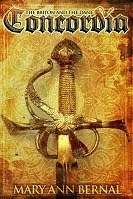
Travel back in time to late Ninth Century Anglo-Saxon Britain where Alfred the Great rules with a benevolent hand while the Danish King rules peacefully within the boundaries of the Danelaw. Trade flourishes, and scholars from throughout the civilized world flock to Britannia’s shores to study at the King’s Court School at Winchester.
Enter Concordia, a beautiful noble woman whose family is favored by the king. Vain, willful, and admired, but ambitious and cunning, Concordia is not willing to accept her fate. She is betrothed to the valiant warrior, Brantson, but sees herself as far too young to lay in the bedchamber of an older suitor.
She wants to see the wonders of the world, embracing everything in it; preferably, but dangerously, at the side of Thayer, the exotic Saracen who charms King Alfred’s court and ignites her yearning passions.
Concordia manipulates her besotted husband into taking her to Rome, but her ship is captured by bloodthirsty pirates, and the seafarers protecting her are ruthlessly slain to a man. As she awaits her fate in the Moorish captain’s bed, by sheer chance, she discovers that salvation is at hand in the gilded court of a Saracen nobleman.
While awaiting rescue, Concordia finds herself at the center of intrigue, plots, blackmail, betrayal and the vain desires of two egotistical brothers, each willing to die for her favor. Using only feminine cunning, Concordia must defend her honor while plotting her escape as she awaits deliverance, somewhere inside steamy, unconquered Muslim Hispania.
“I highly recommend this book to anyone that likes Historical Fiction or even just an excellent story.” -Quietclayer
http://ereadernewstoday.com/more-bargain-and-free-books-for-6-3-14/6744536/

Published on June 03, 2014 08:09
History Trivia - Henry IV of Germany storms Rome, capturing St Peter's Cathedral.
June 3
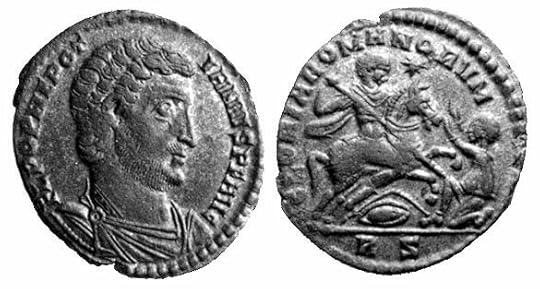
350 Roman usurper Nepotianus, of the Constantinian dynasty, proclaimed himself Roman Emperor, entering Rome at the head of a group of gladiators.

1083 Henry IV of Germany stormed Rome, capturing St Peter's Cathedral.
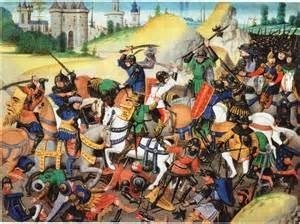
1098 First Crusade: Antioch fell to the crusaders after an eight-month siege.
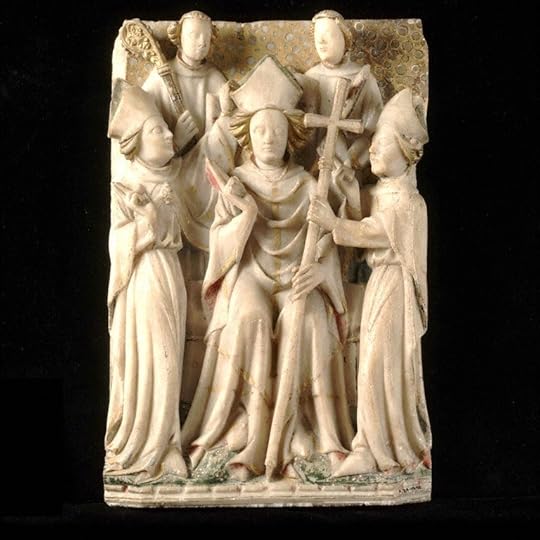
1162 Thomas À Becket consecrated Archbishop of Canterbury.


350 Roman usurper Nepotianus, of the Constantinian dynasty, proclaimed himself Roman Emperor, entering Rome at the head of a group of gladiators.

1083 Henry IV of Germany stormed Rome, capturing St Peter's Cathedral.

1098 First Crusade: Antioch fell to the crusaders after an eight-month siege.

1162 Thomas À Becket consecrated Archbishop of Canterbury.

Published on June 03, 2014 04:51
June 2, 2014
History Trivia - Geiseric the Vandal sacks Rome
June 2
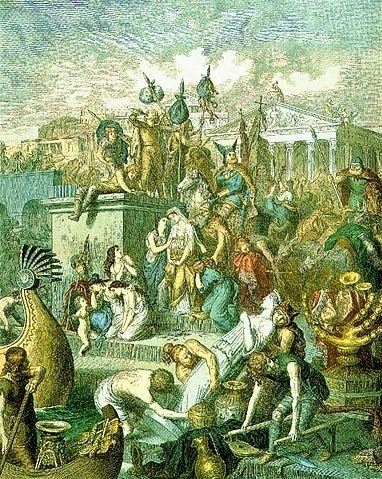
455 Geiseric the Vandal sacked Rome.

575 Benedict I was confirmed as Pope.

597 Saxon King Ethelbert was the first English King to convert to Christianity and baptized by St. Augustine of Canterbury.
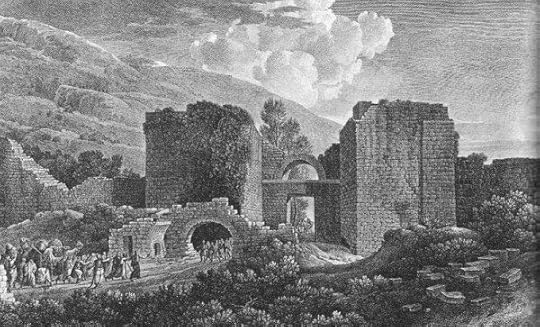
1098 First Crusade: The first Siege of Antioch ended as Crusader forces took the city. The second siege began on June 7.

1420 Henry V married Catherine of Valois.
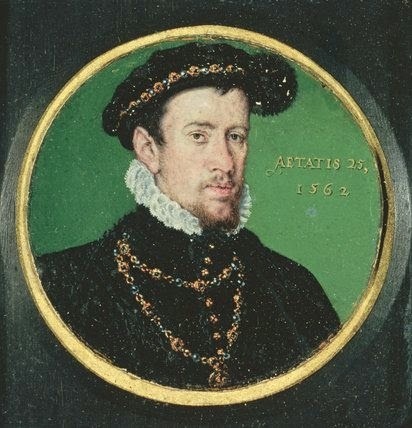
1572 Thomas Howard 4th duke of Norfolk and second cousin to Elizabeth I was executed for treason, plotting to put Mary Queen of Scots on the English throne and restoring Catholicism.


455 Geiseric the Vandal sacked Rome.

575 Benedict I was confirmed as Pope.

597 Saxon King Ethelbert was the first English King to convert to Christianity and baptized by St. Augustine of Canterbury.

1098 First Crusade: The first Siege of Antioch ended as Crusader forces took the city. The second siege began on June 7.

1420 Henry V married Catherine of Valois.

1572 Thomas Howard 4th duke of Norfolk and second cousin to Elizabeth I was executed for treason, plotting to put Mary Queen of Scots on the English throne and restoring Catholicism.

Published on June 02, 2014 04:42
June 1, 2014
Go Fund Me - Arlene needs surgery to rebuild leg

Arlene R. O’Neil is an animal lover, Army Mom, and author. She is the type that always has her hand out to give and would be the last person to ask for assistance. But now, Arlene finds herself in a dire situation. She needs her 5th total hip replacement. The titanium rod that connects the donor bone to what is left of Arlene’s femur is currently broken, and her entire prosthetic will need to be removed and rebuilt to regain use of her leg.
Arlene’s book, Broken Spokes, is the journey of her life. It speaks of the accident she experienced as a child and as a result her lifetime living with a disability. It delves into love and loss with the death of her husband at an early age and the challenges of raising a son alone. In fact, her son, Tanner, is now a SGT in the Army and has served his country for 13 years through 5 tours of duty, earning the Bronze Star as well as numerous other awards. He is still serving his county.
Arlene was never one to ask for hand-outs, she was the one that was always there to lend a hand. She was the giver. And now we want to give back to her.
Being on disability, Arlene’s insurance does not cover the overwhelming medical costs that her fourteen hour surgery will create or any assistance she will need after this complicated procedure. Arlene will have to hire people to assist during her five month recuperation process; help with the animals, yard care, house cleaning and personal care until she is recovered enough to resume these activities on her own.
She will need as much financial support as you can give to help her through her recovery period. Worrying about paying for needed medication and physical help should be the last of her worries. Arlene needs to be able to focus 100% on healing.
We also ask that people pray that Arlene has the strength to make it through this complex surgery and recovery.
If you can help, please visit: http://www.gofundme.com/Arlene


Published on June 01, 2014 15:52
Egypt turns to technology in effort to protect ancient treasures from looters
Fears for ancient sites and tourism prompts use of satellite imagery to track extent of damage wrought by theft of artefacts
Katherine Boyle
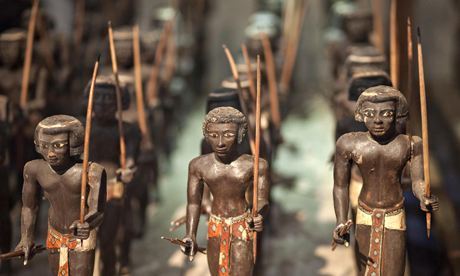 Statues of Nubian archers that were stolen from the Egyptian Museum during the first days of the revolution have been returned, but looting continues to be a problem. Photograph: Mahmoud Khaled/Getty/AFP
Statues of Nubian archers that were stolen from the Egyptian Museum during the first days of the revolution have been returned, but looting continues to be a problem. Photograph: Mahmoud Khaled/Getty/AFP
The closest comparison is Swiss cheese: holes in vast swaths of land where looters, armed with machine guns and bulldozers, take to ancient archaeological sites in search of loot. To the untrained eye, these holes, visible in satellite images, seem haphazard. But to experts, these deep pits, spanning hectares of land, are the work of sophisticated traffickers.
It's exactly the kind of looting that worries Mohamed Ibrahim Ali, Egypt's minister of state for antiquities. "The objects that are stolen from museums are easier to track because they are registered," Ibrahim said, referring to artefacts taken from Egypt's Malawi National Museum and Egyptian Museum in Cairo, many of which have been identified and returned. "The problem is the illicit digging everywhere. In Egypt, when you dig, you find something. So some gangs have started to become active very quickly because of the breakdown of the police force."
Looting isn't new. Ibrahim calls it a "centuries-old business" since objects were stolen from King Tut's tomb. But today, more than three years since the Egyptian revolution, looted antiquities have become a grave concern for a country dependent on historical tourism. And the confluence of economic, political and technological factors has made looting of ancient artefacts more problematic than ever. The ease of transport abroad, coupled with sky-high prices, make antiquities a sweet and easy target for organised thieves.
Ibrahim visited Washington in March to meet Obama administration officials to ask for emergency restrictions on the import of antiquities. Immigration and Customs Enforcement can currently seize artefacts from 16 countries if they appear to lack proper documentation, but Egypt isn't one of them. This month the state department will consider Egypt's proposal.
"The agreement would make us capable of controlling the situation," Ibrahim said. "Many objects are being sold here in the United States."
But stopping stolen objects from crossing US borders isn't the only option, experts say. Some worry that harsh restrictions will stop legal sales to museums. Others want to target looted objects at the source, and new technologies are putting the spotlight on the illicit trade long before items reach border control.
Sarah Parcak, an archaeologist at the University of Alabama at Birmingham, uses satellite imagery from DigitalGlobe, a satellite company, and Google Earth to identify what she calls "hot spots". Tracking regions where looting occurs, she says, may help law enforcement and officials identify looted artefacts before they turn up for sale.
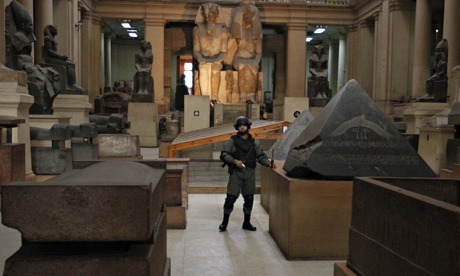 A soldier stands guard in the Egyptian museum in Cairo in 2011 after looters broke in and damaged artefacts. Photograph: Tara Todras-Whitehill/AP
A soldier stands guard in the Egyptian museum in Cairo in 2011 after looters broke in and damaged artefacts. Photograph: Tara Todras-Whitehill/AP
"It was really hard before this technology to get a full sense of site damage from looting all over the world," Parcak said. "It was one thing to see the pits, but it was really hard to systematically count them. The satellite imagery allows us to track extent of damage at site – not only get a sense of numbers, but also track change to a site over time."
Parcak also noted that locating the movement in looted sites will help auction houses and traders scrutinise objects up for sale more closely. Since many objects are known to be from particular regions or eras of history, activity in an archaeological site could raise flags before sales even happen. Often, looters fake the provenance of an item, sometimes duping major houses or putting items on sites such as eBay, as was the case last year, when eBay removed 125 ancient Egyptian artefacts up for auction.
The Association of Art Museum Directors (AAMD), which sets standards for many US museums, has strict rules governing how museums deal with artefacts of suspicious provenance. In 2013, the organisation strengthened its guidelines.
"In the last decade, attitudes have changed fundamentally and so major museums like the Met, the Smithsonian and now AAMD are having a collective response," said Julian Raby, director of the Smithsonian's Freer Gallery of Art and Sackler Gallery. "I don't think anybody is unconcerned about the devastation of these sites and the distressing photographs from Iraq, now from Egypt. We now have to worry about the individual provenance of any single object."
The International Coalition to Protect Egyptian Antiquities, part of George Washington University's Capitol Archaeological Institute, is advocating on behalf of Egypt's call for temporary restrictions. But some in museums also caution against harsh restrictions, which could inadvertently cause the black market to grow. While established museums in the United States and Europe follow strict guidelines, new museums in developing countries and private collectors aren't necessarily operating under the same rules.
"The AAMD, anecdotally, is saying that the number of antiquities acquired by American museums has plummeted," Raby said. "Whether that creates a problem in terms of stewardship in the long term may well become an issue."
http://www.theguardian.com/world/2014/jun/01/egypt-museum-theft-satellite-technology
Katherine Boyle
 Statues of Nubian archers that were stolen from the Egyptian Museum during the first days of the revolution have been returned, but looting continues to be a problem. Photograph: Mahmoud Khaled/Getty/AFP
Statues of Nubian archers that were stolen from the Egyptian Museum during the first days of the revolution have been returned, but looting continues to be a problem. Photograph: Mahmoud Khaled/Getty/AFPThe closest comparison is Swiss cheese: holes in vast swaths of land where looters, armed with machine guns and bulldozers, take to ancient archaeological sites in search of loot. To the untrained eye, these holes, visible in satellite images, seem haphazard. But to experts, these deep pits, spanning hectares of land, are the work of sophisticated traffickers.
It's exactly the kind of looting that worries Mohamed Ibrahim Ali, Egypt's minister of state for antiquities. "The objects that are stolen from museums are easier to track because they are registered," Ibrahim said, referring to artefacts taken from Egypt's Malawi National Museum and Egyptian Museum in Cairo, many of which have been identified and returned. "The problem is the illicit digging everywhere. In Egypt, when you dig, you find something. So some gangs have started to become active very quickly because of the breakdown of the police force."
Looting isn't new. Ibrahim calls it a "centuries-old business" since objects were stolen from King Tut's tomb. But today, more than three years since the Egyptian revolution, looted antiquities have become a grave concern for a country dependent on historical tourism. And the confluence of economic, political and technological factors has made looting of ancient artefacts more problematic than ever. The ease of transport abroad, coupled with sky-high prices, make antiquities a sweet and easy target for organised thieves.
Ibrahim visited Washington in March to meet Obama administration officials to ask for emergency restrictions on the import of antiquities. Immigration and Customs Enforcement can currently seize artefacts from 16 countries if they appear to lack proper documentation, but Egypt isn't one of them. This month the state department will consider Egypt's proposal.
"The agreement would make us capable of controlling the situation," Ibrahim said. "Many objects are being sold here in the United States."
But stopping stolen objects from crossing US borders isn't the only option, experts say. Some worry that harsh restrictions will stop legal sales to museums. Others want to target looted objects at the source, and new technologies are putting the spotlight on the illicit trade long before items reach border control.
Sarah Parcak, an archaeologist at the University of Alabama at Birmingham, uses satellite imagery from DigitalGlobe, a satellite company, and Google Earth to identify what she calls "hot spots". Tracking regions where looting occurs, she says, may help law enforcement and officials identify looted artefacts before they turn up for sale.
 A soldier stands guard in the Egyptian museum in Cairo in 2011 after looters broke in and damaged artefacts. Photograph: Tara Todras-Whitehill/AP
A soldier stands guard in the Egyptian museum in Cairo in 2011 after looters broke in and damaged artefacts. Photograph: Tara Todras-Whitehill/AP "It was really hard before this technology to get a full sense of site damage from looting all over the world," Parcak said. "It was one thing to see the pits, but it was really hard to systematically count them. The satellite imagery allows us to track extent of damage at site – not only get a sense of numbers, but also track change to a site over time."
Parcak also noted that locating the movement in looted sites will help auction houses and traders scrutinise objects up for sale more closely. Since many objects are known to be from particular regions or eras of history, activity in an archaeological site could raise flags before sales even happen. Often, looters fake the provenance of an item, sometimes duping major houses or putting items on sites such as eBay, as was the case last year, when eBay removed 125 ancient Egyptian artefacts up for auction.
The Association of Art Museum Directors (AAMD), which sets standards for many US museums, has strict rules governing how museums deal with artefacts of suspicious provenance. In 2013, the organisation strengthened its guidelines.
"In the last decade, attitudes have changed fundamentally and so major museums like the Met, the Smithsonian and now AAMD are having a collective response," said Julian Raby, director of the Smithsonian's Freer Gallery of Art and Sackler Gallery. "I don't think anybody is unconcerned about the devastation of these sites and the distressing photographs from Iraq, now from Egypt. We now have to worry about the individual provenance of any single object."
The International Coalition to Protect Egyptian Antiquities, part of George Washington University's Capitol Archaeological Institute, is advocating on behalf of Egypt's call for temporary restrictions. But some in museums also caution against harsh restrictions, which could inadvertently cause the black market to grow. While established museums in the United States and Europe follow strict guidelines, new museums in developing countries and private collectors aren't necessarily operating under the same rules.
"The AAMD, anecdotally, is saying that the number of antiquities acquired by American museums has plummeted," Raby said. "Whether that creates a problem in terms of stewardship in the long term may well become an issue."
http://www.theguardian.com/world/2014/jun/01/egypt-museum-theft-satellite-technology

Published on June 01, 2014 15:09
Vikings - Life and Legend at the British Museum - 2.20pm Entry - March - June 2014
Vikings - Life and Legend at the British Museum - 2.20pm Entry - March - June 2014The British Museum
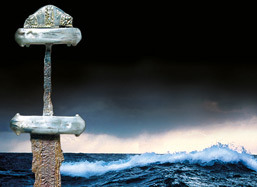 KIDS UNDER 16 YEARS GO FREE!!
KIDS UNDER 16 YEARS GO FREE!!
Step back in time and discover an ancient Viking land in The British Museum s first major exhibition in 30 years. Enter a world of warriors, seafarers and conquerors to discover the many fascinating aspects of a history that is both strangely alien yet remarkably familiar.
Vikings: The Life and Legend at the British Museum will present personal objects, including jewellery, amulets and religious images, which help to reveal more about how the Vikings saw themselves and their world. Exquisite objects, including the magnificent Vale of York Hoard, demonstrate the global reach of the Viking network of trade, plunder and power.
At the heart of the exhibition will be the surviving timbers of a fascinating 37-metre-long warship. Found in 1997, and dating to around 1025, it is the longest Viking ship ever discovered. Many other new discoveries, including part of a mass grave of Viking warriors, will be on display showing how our understanding of the Vikings is still being changed by new excavations and recent research.
Don t miss out on your chance to take an extraordinary journey back in time to see Vikings: The Life and Legend at the British Museum.
Supported by BP.
Organised with the National Museum of Denmark and the Museum für Vor- und Frühgeschichte Staatliche Museen zu Berlin
Entry time: 2.20pm only
Sword, late 8th–early 9th century. Kalundborg or Holbæk, Zealand, Denmark. Photo: John Lee. © The National Museum of Denmark. Background: Kim Westerskov/Getty Images.
Book a trip to Vikings - Life and Legend at the British Museum - 2.20pm Entry online with us, with tickets to Vikings - Life and Legend at the British Museum - 2.20pm Entry and accommodation included in the price.
British Museum
Great Russell Street
London
WC1B 3DG
http://www.superbreak.com/go/HB993/events/event-1343.htm
 KIDS UNDER 16 YEARS GO FREE!!
KIDS UNDER 16 YEARS GO FREE!!Step back in time and discover an ancient Viking land in The British Museum s first major exhibition in 30 years. Enter a world of warriors, seafarers and conquerors to discover the many fascinating aspects of a history that is both strangely alien yet remarkably familiar.
Vikings: The Life and Legend at the British Museum will present personal objects, including jewellery, amulets and religious images, which help to reveal more about how the Vikings saw themselves and their world. Exquisite objects, including the magnificent Vale of York Hoard, demonstrate the global reach of the Viking network of trade, plunder and power.
At the heart of the exhibition will be the surviving timbers of a fascinating 37-metre-long warship. Found in 1997, and dating to around 1025, it is the longest Viking ship ever discovered. Many other new discoveries, including part of a mass grave of Viking warriors, will be on display showing how our understanding of the Vikings is still being changed by new excavations and recent research.
Don t miss out on your chance to take an extraordinary journey back in time to see Vikings: The Life and Legend at the British Museum.
Supported by BP.
Organised with the National Museum of Denmark and the Museum für Vor- und Frühgeschichte Staatliche Museen zu Berlin
Entry time: 2.20pm only
Sword, late 8th–early 9th century. Kalundborg or Holbæk, Zealand, Denmark. Photo: John Lee. © The National Museum of Denmark. Background: Kim Westerskov/Getty Images.
Book a trip to Vikings - Life and Legend at the British Museum - 2.20pm Entry online with us, with tickets to Vikings - Life and Legend at the British Museum - 2.20pm Entry and accommodation included in the price.
British Museum
Great Russell Street
London
WC1B 3DG
http://www.superbreak.com/go/HB993/events/event-1343.htm

Published on June 01, 2014 15:00



